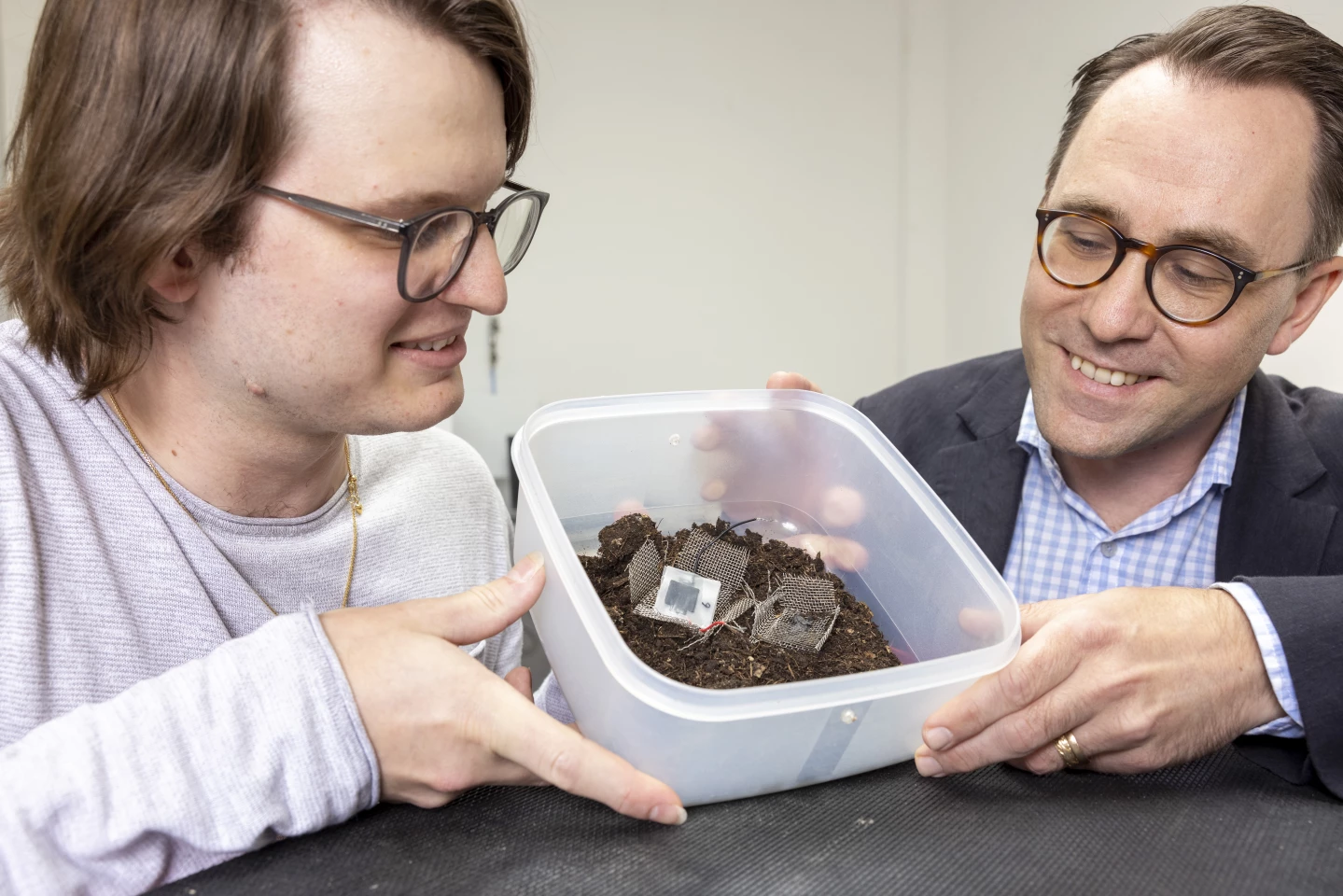As Internet-of-Things technology continues to evolve, we're going to see an increasing number of battery-powered connected devices – some of which will be single-use, like shipping packaging. A new biodegradable mini-capacitor has been created with such scenarios in mind.
The 3D-printed prototype device was designed by a team at Switzerland's Empa research institute, led by Xavier Aeby and Gustav Nyström. It consists of a flexible substrate, on top of which is deposited a conductive layer, an electrode, and an electrolyte. Once printed, the whole assembly gets folded over like an omelette, so the electrolyte is in the middle.
Aeby tells us that the substrate is composed of a mixture of cellulose nanofibers and nanocrystals mixed with glycerol; the conductive layer is made of graphite, carbon black and shellac; the electrode is composed of the same materials as the substrate, along with activated carbon and graphite; while the electrolyte is made of cellulose nanocrystals, glycerol and table salt.

In its current form, the resulting device is capable of powering a small digital clock, and can store an electrical charge for several hours. Additionally, it can withstand thousands of charge/discharge cycles, it's pressure- and shock-resistant, plus it will continue to work after being frozen or after sitting unused for years.
Most importantly, though, it will reportedly decompose once discarded and left open to the elements. The scientists claim that after two months, all that will remain are a few visible pieces of carbon. By contrast, conventional batteries may leach toxins into the environment when simply tossed in the garbage, and they can be difficult to fully recycle.
It is hoped that the mini-capacitor could ultimately be used in tools such as disposable and/or recyclable sensors, microtransmitters or biomedical devices that are periodically charged via an electromagnetic field. The research is described in a paper that was recently published in the journal Advanced Materials.
Source: Empa






